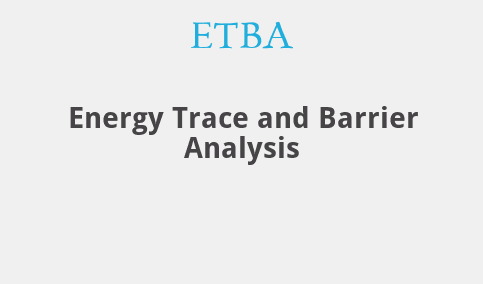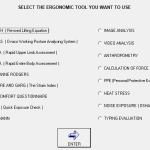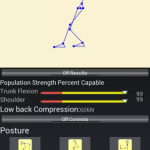
ETBA ردیابی انرژی و تجزیه و تحلیل حفاظها
ETBA ردیابی انرژی و تجزیه و تحلیل حفاظها (Energy Trace & Barrier Analysis) ETBA، یک تکنیک نسبتاً جدید است که بر پایه برخی از اصول پایش مدیریتی و درخت ریسک (MORT) بنا نهاده شده است. که یک رویداد را به صورت یک جریان انرژی ناخواسته تعریف میکند. یک حادثه زمانی به وجود میآید که یک جریان انرژی ناخواسته تولید شده و به دلیل عدم حفاظ کافی در مسیر ان به اهداف مختلفی برخورد نموده و باعث صدمه به افراد و یا ایجاد خسارت مالی میگردد. بنابراین جریان ناخواسته انرژی باعث ایجاد یک رویداد شده و اگر نتایج این رویداد نامطلوب باشد حادثه ایجاد می شود.
دانلود پاورپوینت ردیابی انرژی و تجزیه و تحلیل حفاظها ETBA
The energy trace and barrier analysis (ETBA) is a professional level procedure intended to detect hazards by focusing in detail on the presence of energy in a system and the barriers for controlling that energy. It is conceptually similar to the interface analysis in its focus on energy forms, but is considerably more thorough and systematic. The Energy Trace and Barrier Analysis (ETBA) method can be used to develop a more detailed understanding of energy exchanges that occurred during a phenomenon. The technique helps investigators avoid oversights in behaviors that might not otherwise be noticed.
This technique approaches the development of Event Building Blocks (EBs) by tracing the flows of energy into, within, and out of a system or component involved in a phenomenon. It is based upon the premises that energy flows introduce changes in a system or component which, if understood, can be predicted and controlled. ETBA documents energy flows by methodically tracing energy movements within systems or components, and across interfaces, to identify behaviors that influenced the course of events being investigated.
The ETBA is intended for use by loss control professionals and is targeted against higher risk operations, especially those involving large amounts of energy or a wide variety of energy types. The method is used extensively in the acquisition of new weapons systems and other complex systems.
ETBA can be used at any stage of an investigation to explore changes and help develop hypotheses about what might have happened.
The procedure can accommodate any observed or documented data about energies involved in any occurrence. It requires knowledge about about energies, their attributes and behaviors; the energies present during an occurrence; the expected course of the energy flow through the system involved with the occurrence; and the energy flow out of the system.
The ETBA is intended for use by loss control professionals and is targeted against higher risk operations, especially those involving large amounts of energy or a wide variety of energy types. The method is used extensively in the acquisition of new weapons systems and other complex systems.
ETBA can be used at any stage of an investigation to explore changes and help develop hypotheses about what might have happened.
The procedure can accommodate any observed or documented data about energies involved in any occurrence. It requires knowledge about about energies, their attributes and behaviors; the energies present during an occurrence; the expected course of the energy flow through the system involved with the occurrence; and the energy flow out of the system.
The ETBA involves 5 basic steps. Step 1 is the identification of the types of energy found in the system. It often requires considerable expertise to detect the presence of the types of energy. Step 2 is the trace step. Once identified as present, the point of origin of a particular type of energy must be determined and then the flow of that energy through the system must be traced. In Step 3 the barriers to the unwanted release of that energy must be analyzed. For example, electrical energy is usually moved in wires with an insulated covering. In Step 4 the risk of barrier failure and the unwanted release of the energy is assessed. Finally, in Step 5, risk control options are considered and selected


